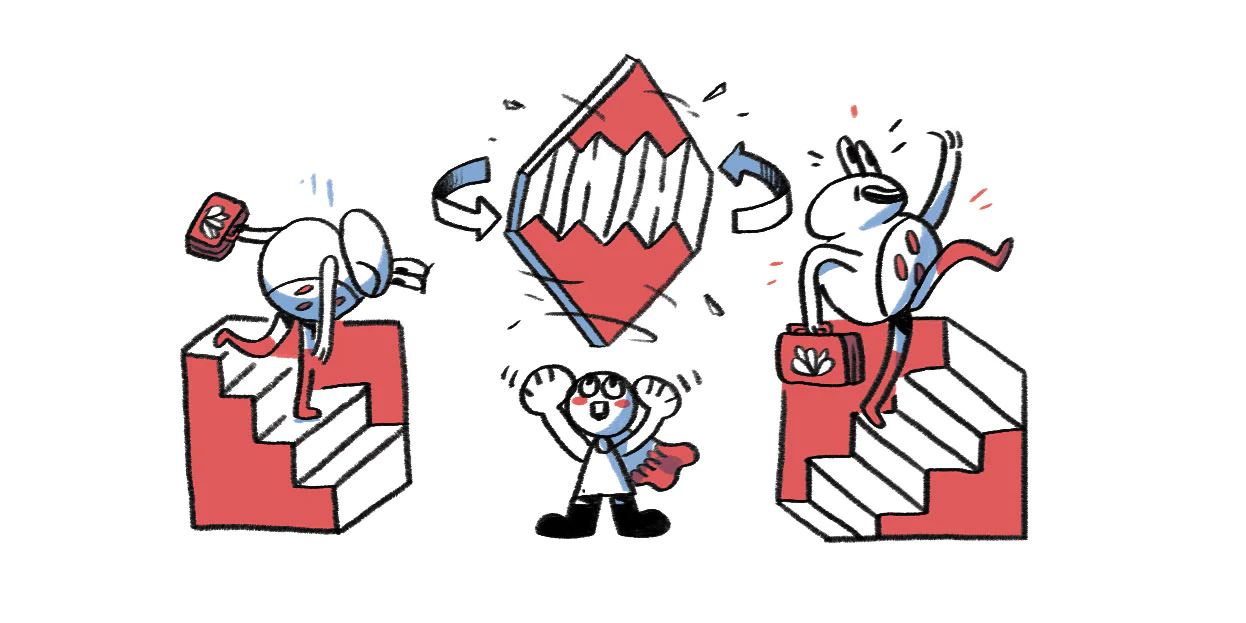Instil a sense of confidence and purpose in your team by making your problem, goal or purpose clear before you embark upon your project. The power of properly framing things cannot be underestimated and – once it’s been skipped – it is pointless to complete retroactively.
When to use a framing workshop
Start this process once you’ve set your goals and unpacked your problems to give your team the best chance of achieving success. Framing the problem that you are trying to solve is particularly powerful. It helps you avoid solutions that are solely based on ‘gut feeling’ or what someone ‘wants’ rather than what will be effective.
The way this works will vary depending on what you wish to achieve. From solidifying your value proposition and goals to identifying (and planning to overcome) assumptions and challenges, there’s a framing workshop to suit every project.
Value Proposition workshop
A value proposition statement is crucial – it’s the whole point of your project, in written form. This super simple Value proposition workshop is equal parts enlightening and inspiring.
First, you collect a list of perceived: target customers, user needs, product descriptions and product benefits from your team. If they all say the same thing you can stop right there… but we’re pretty sure that won’t happen.
The next stage of this tactic is where the magic happens. Your team constructs a value proposition statement that clearly articulates the value of your product, giving them focus and purpose.
Problem Statement workshop
Every project, every product and every service exists to solve a problem. How you articulate the problem your team sets out to solve is key to your success.
A Problem statement workshop gets your key stakeholders together to hash out what the real challenge your customers are facing is, how it’s affecting things and how to start talking about (and design) solutions.
This workshop might uncover more problems than you initially expected, but they will be neatly worded, sorted and ready for your team to tackle together.
Hypothesis Statement workshop
Assumptions are a dangerous thing. Logic, reason and evidence help us avoid falling foul of mistaken assumptions, and a Hypothesis statement workshop brings all of those things together.
By turning your assumptions into experimental hypotheses, your team will generate a series of tests they can run to make sure you’re not barking up the wrong tree.
‘How might we…’ workshop questions
A problem stops your project in its tracks. It presents a wall and is purely obstructive to your progress. By using ‘How might we’ questions in your workshop, you can harness the power of turning your problems into questions.
Every question has an answer, so framing things in this way empowers your team to find the right one rather than fretting over whether or not it even exists. Once you have the answer, progress towards your goal can start.
What next?
Once you have turned your problems into questions, identified your unique value proposition and tested your assumptions away, the next step is to get to work on the solutions. You can see why this framing stage is so important; imagine skipping straight to solving your problems before you really know what they are.
Depending on your project, the next steps might be to generate ideas for solving your problems, or to evaluate your proposed solutions to your newly elucidated problems. Or, if you’d really like to geek out, you can go down the rabbithole of Wardley Maps – a visual approach that maps out the context and evolution of all the elements of your project, product or service to give you unwavering confidence in the decisions you make.


If you leave us your email, we'll let you know if we update this guide based on your feedback.